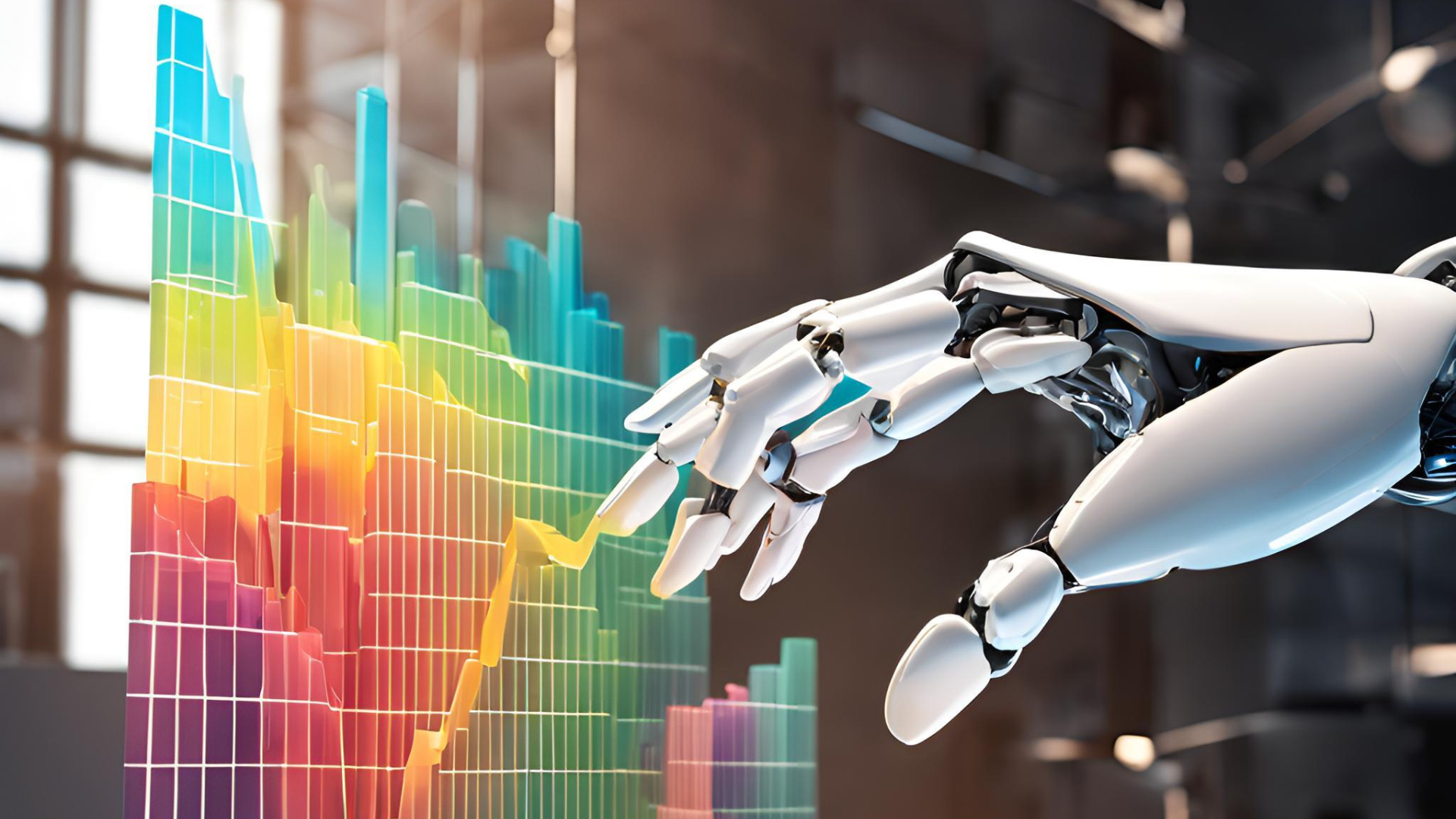We’ll tell you right from the start: with the help of AI. It’s fair to say that AI seems to be making everyone’s job a little easier. It can make processes easier and faster – and help you make better decisions and save time for creative work.
But how is AI helping the data analytics industry? Technologies like machine learning, predictive algorithms, and natural language processing make it easier to handle large amounts of data. They help us collect, organize, and understand data better. Traditional data analysis methods cannot match AI’s ability to find patterns, make predictions, and provide useful insights.
What is AI in data analytics?
Data analytics is simply the science of analyzing data. AI is intelligence displayed by machines and computers.
Traditional data analysis involved manually collecting and cleaning data, using descriptive statistics to summarize trends, creating and testing reports, creating data visualizations and more.
When using AI-powered data analytics, you not only streamline these processes and make them more accurate, but you also unlock new possibilities too. Creating hypothesis becomes unnecessary because AI can automatically uncover trends, patterns, and correlations in massive datasets. Prescriptive analytics helps you optimize decision making. Natural language processing (NLP) even lets you ask questions about your data, making insights available to more people.
AI helps businesses get real-time insights, make data-driven decisions more efficiently and effectively, reduce time-consuming tasks, and find complex, non-linear patterns that humans are likely to miss.
In simple terms, AI in data analytics is like having 1,000 data scientists who work very quickly. But don’t feel threatened just yet data scientists. AI is only as powerful as the data it’s fed and the expertise guiding it.
Benefits of AI in data analytics
Using AI technologies, such as machine learning and natural language processing, may seem hard at first. However, when you think about the time and cost savings, you will see why it is worth it. Let’s look at just a few of the benefits.
Improved data processing
AI makes processing data much easier and faster because it automates tasks that would otherwise require a lot of manual effort. While a human would take hours to process and understand raw data, AI can do it instantly. This gives businesses fast access to useful insights.
Machine learning models can find useful information in various types of data. This includes both structured and unstructured data. They allow for deeper analysis without slowing things down with human help. This also means businesses aren’t bogged down by routine data processing tasks and can focus on more important things.
Increased accuracy
Along with increased speed, increased accuracy is a major advantage for AI adopters. Relying heavily on manual processes means relying on human-level accuracy, which can never be as good as AI because of factors like tiredness or oversight introducing errors.
AI can almost entirely remove this risk by using intelligent algorithms designed to find and eliminate inaccuracies. Machine learning models also get more accurate with time, continuously refining predictions and analyses based on historical information.
Improved scalability
As data increases in volume and complexity, intelligent machines are becoming essential to handle it. Traditional methods can no longer cope and are insufficient in meeting business needs. AI, on the other hand, can analyze huge, complicated data sets without compromising speed or quality.
This means AI can adapt to your data requirements whether you’re a small startup or a large enterprise. Businesses can also explore new possibilities that were inaccessible when relying on traditional systems. For example, you could analyze diverse data sets, integrate multiple data sources – or uncover insights that were previously invisible.
More accurate forecasting
AI can help you predict outcomes more accurately than traditional methods. It can analyze large and complex data sources. This allows it to find patterns and trends that manual analysis might miss. With AI-driven predictive analytics, businesses can derive patterns from massive datasets and produce reliable forecasts for business planning.
This can take activities like sales projections, financial planning, inventory management, and customer behavior prediction to new levels of precision. Businesses using AI for analytics can better prepare for the future, control risk and use resources more efficiently.
Improved decision making
All the previous benefits combine to produce this key advantage: the ability to make good decisions at speed. With real-time insights and the automation of complex data analysis, businesses can remain agile and adaptive to market or internal changes. With traditional data analytics, lengthy data preparation, manual calculations, and static reporting delay the ability to act on insights. AI’s ability to process data and uncover trends on the spot overcomes these challenges.
Businesses in dynamic industries like finance, healthcare, retail, and technology, where fast action is essential, can benefit massively from this kind of edge. Faster decision making means businesses can be more proactive than reactive, jumping on opportunities before competitors and mitigating risks.
How to use AI in data analytics?
Before you can leverage AI for data analytics effectively, you need to come up with a plan. Here’s a general outline you can follow to get started:
1. Identify a problem you want to solve
Begin by defining a business problem you want to solve with AI, whether it’s increasing customer retention, cutting costs, or optimizing inventory. This gives your new AI solution a purpose and ensures it’s focused on the most pressing business needs.
2. Collect and prepare data
As we mentioned before, AI is only as good as the data you feed it. Consider the problem you defined in step one and gather all available data relating to the problem. This will likely come from multiple sources, such as databases, sales records, and customer interactions. Prepare the data by cleaning, integrating, and structuring it to ensure you’re feeding the high-quality information to the AI.
3. Choose the right AI tool
Not all AI tools are equally suited to data analytics. Be sure to use one that’s fit for the job and matches your requirements. Tons of established AI services exist, like Google Cloud AI and Microsoft Azure Machine Learning. New tools come out all the time. Consider the size of your data, your team’s skill level and the complexity of the analysis when choosing a tool.
4. Apply machine learning models
Once you’ve prepared the data and have your chosen AI tool ready, it’s time to apply machine learning models to extract insights. You can train the AI to do a range of things, like find patterns, predict trends, or make recommendations. You can use different pre-built models based on your business goals. Alternatively, you can create custom algorithms for specific problems.
5. Act on insights
AI’s true value lies in turning raw data into actionable insights. So, to make sure you’re leveraging this, be sure to interpret these findings in the context of your business. Use them to guide strategy, inform decisions that impact your bottom line, and improve processes.
Ready to transform?
AI-powered data analytics is revolutionizing how businesses operate and make decisions – and gain valuable insights. With MicroStrategy, you can add strong analytics right into your workflows. This helps your teams find hidden patterns, predict future trends, and make smarter decisions. Explore the possibilities of AI-driven data analytics with MicroStrategy, we can help you!
(source: https://www.microstrategy.com/blog/unlocking-business-growth-with-ai-data-analytics)


